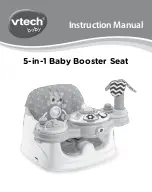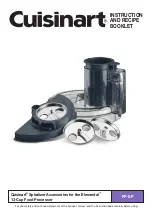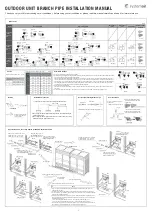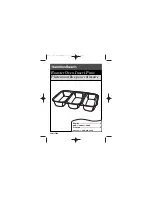
VRLA BATTERIES
AUGUST 2003
This information is generally descriptive only and is not intended to make or imply any representation, guarantee or warranty with respect to any cells and batteries. Cell and battery designs/specifications are subject
to modification without notice. Contact Panasonic for the latest information.
PRECAUTIONS FOR HANDLING VALVE-REGULATED LEAD-ACID BATTERIES
-CONT.
Safety Precautions
1. Environment and condition of use
DANGER
(1) Do not load valve-regulated lead-acid batteries
(hereinafter described as “the battery”) in airtight
equipment. Use of the battery in airtight equipment
may cause explosion of the equipment or injury.
WARNING
(1) Charge the battery using a specified charger or
under the charging condition specified by
Panasonic. Charging the battery under any other
conditions may cause the battery to overheat,
emit hydrogen gas, leak, ignite, or burst.
(2) When using the battery in medical equipment*,
provide a back-up system other than the main
battery. Failure of the main battery in the absence
of a back-up power could lead to injury.
(3) Avoid direct contact of the battery with metallic
containers; acid- and heat-resistant insulators
should be employed. Leakage of the battery in the
absence of insulators may cause problems such
as release of fumes and ignition.
(4) Do not place the battery near a device that may
cause sparks (such as a switch or a fuse). The
battery may generate flammable gas when
charged, so remember to keep the battery away
from fire oran open flame to prevent any sparks
from igniting or causing explosions.
(5) Avoid placing the battery near a heat-generating
part (such as a transformer). Using the battery
near a heat source may cause the battery to
overheat, leak, ignite, or burst.
* The battery should only be used in non life critical medical equipment.
When any medical equipment incorporating a Panasonic VRLA battery
is planned, please notify Panasonic.
CAUTION
(1) The operating temperature range for the battery is
specified below. Use of the battery at
temperatures beyond this range may cause
battery damage.
Normal operating temperature of the battery is
77°F (25°C).
When discharged (equipment in use): 5°F to
122°F (-15°C to 50°C)
When charged: 32°F to 104°F (0°C to 40°C)
During storage: 5°F to 104°F (-15°C to 40°C)
(2) Do not allow the battery to be immersed in or
wetted with water/sea-water; as it may corrode
the battery, ignite or create an electric shock
hazard.
(3) Do not place or store the battery in an automobile
in hot weather, under direct sunlight, in front of a
stove, or near fire. Use or storage of the battery in
these places may cause battery leakage, fire or
bursting.
(4) Use of the battery in a dusty environment is not
recommended, as it may cause the battery to
short. The battery should be periodically checked
when used in such an environment.



























